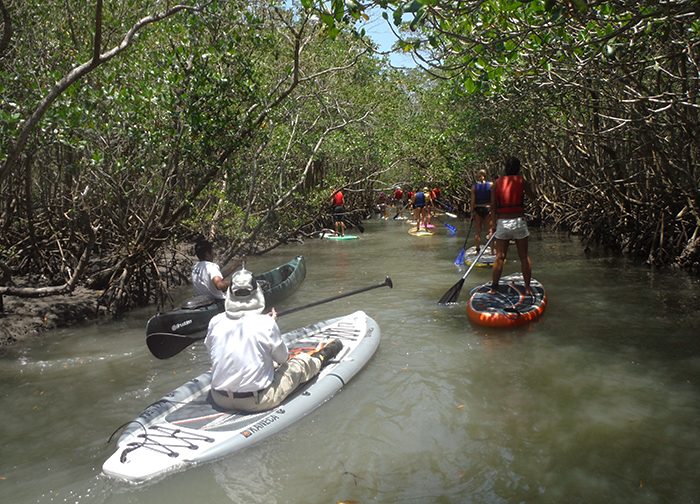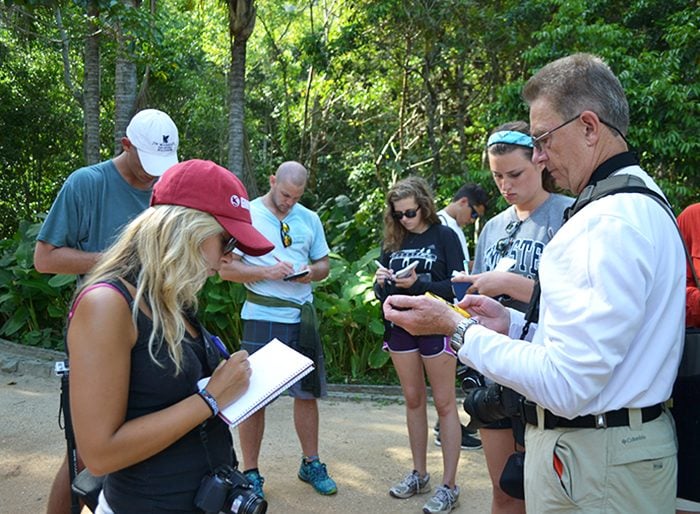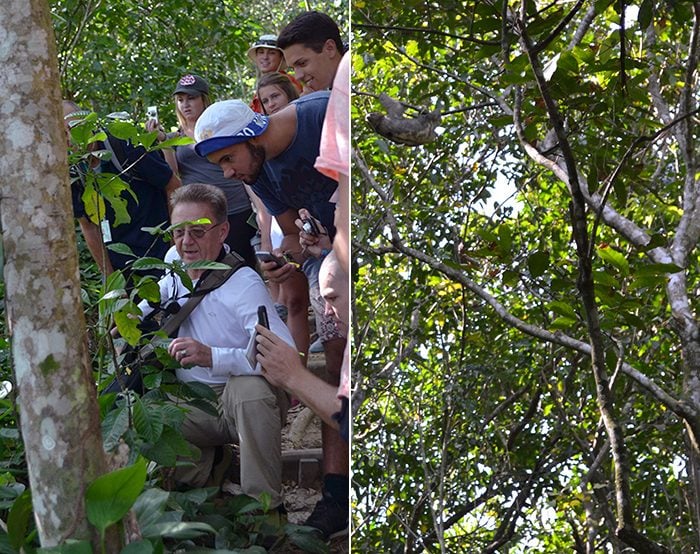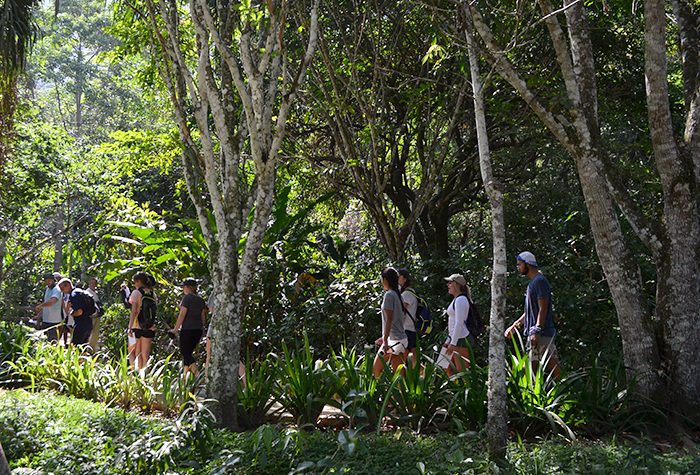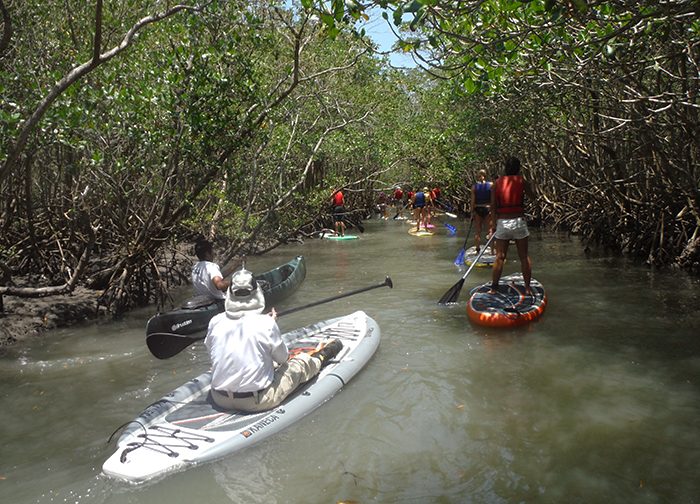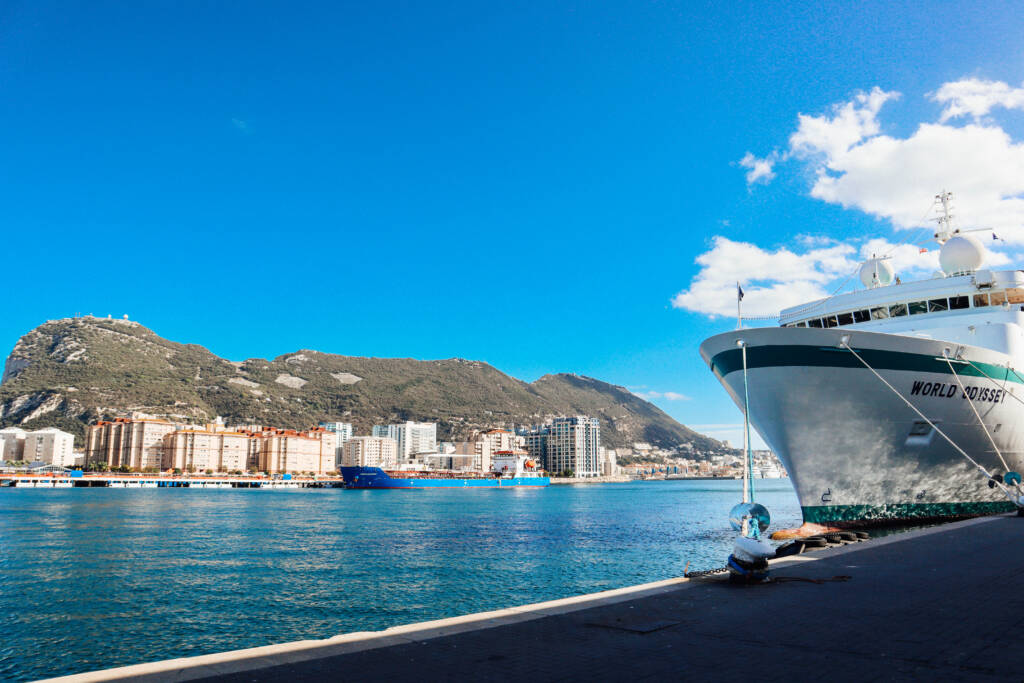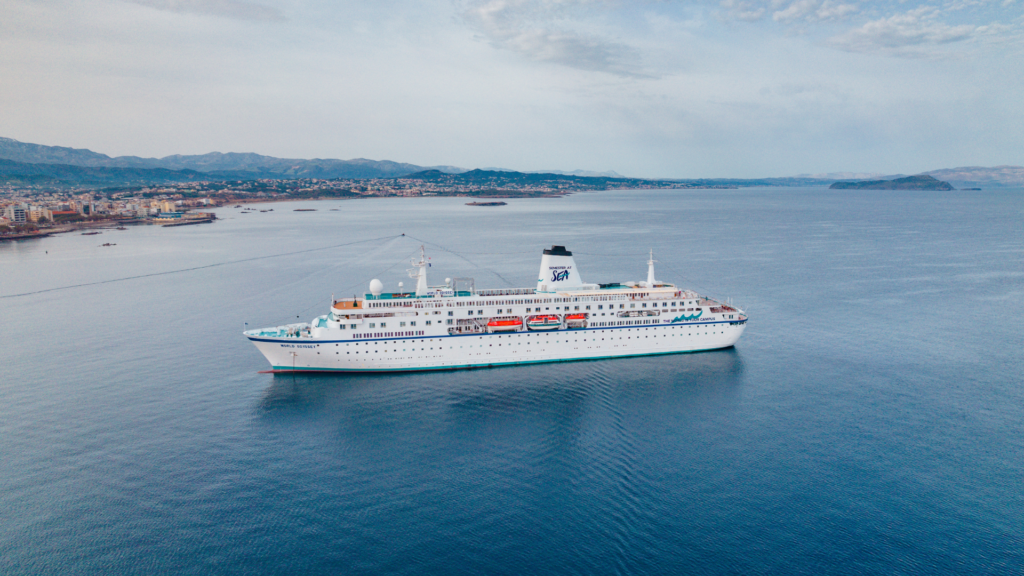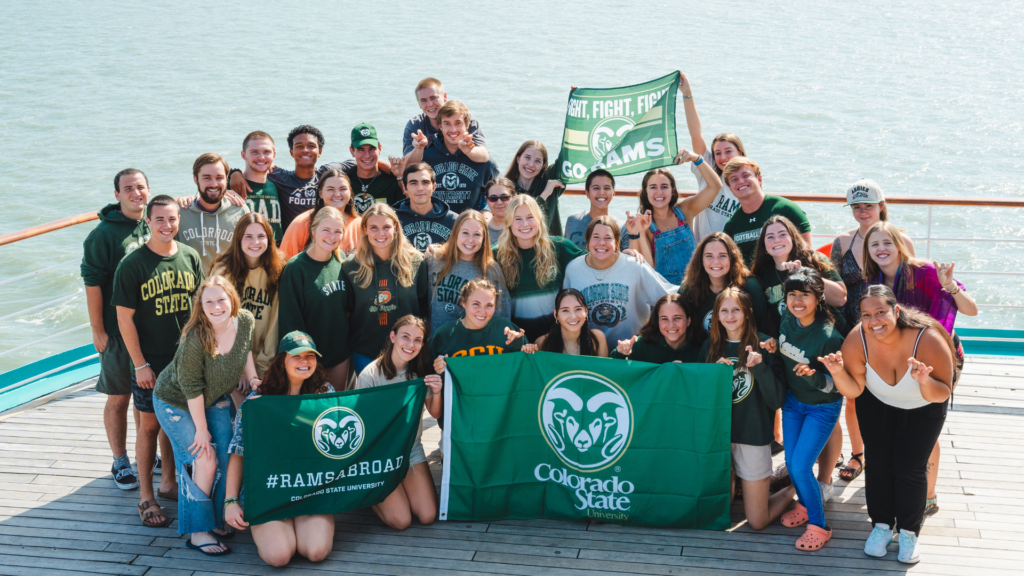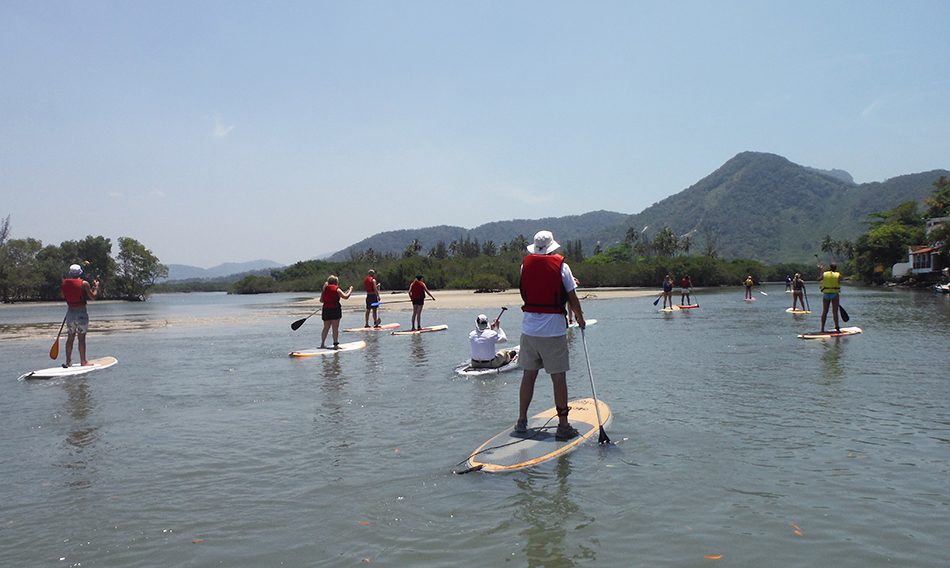
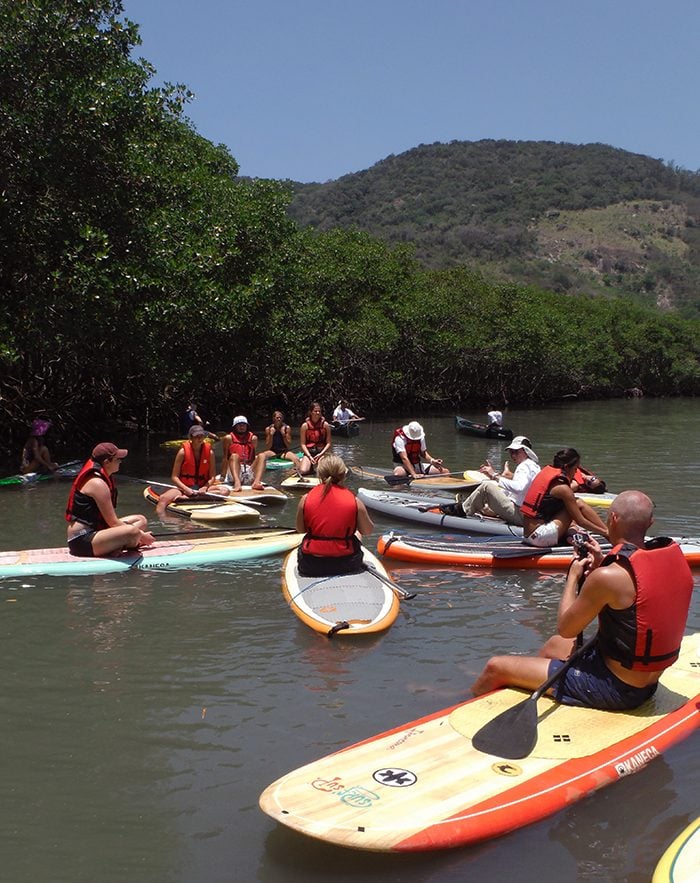
Just outside the city limits, environmental science students learned there was a whole other side of Rio de Janeiro to explore. The town of Barra de Guaratiba was home to a secluded beach, beautiful water, and most importantly a complex mangrove ecosystem.
This area remained a relatively untouched natural wonder and was a safe haven to much of the wildlife in that region. With the density of mangroves so significant and their need to be rooted in salt water, there was only one way for students to explore them‚Ķon paddleboards. As they weaved in and out of the mangroves, students paddled themselves as close as possible to examine the hidden wildlife and reproductive process of these trees. “It was so up-close and tangible that we could see exactly what we were learning about in class,” said Taylor Hooper, from Ferris State University.
Being physically and academically challenged at the same time, helped to engage students in their curriculum and lab experience. “If you succeed in connecting different dimensions of student life‚Ķ then they learn,” said Professor Sergei Polozov.
Transitioning to the restingas ecosystem, discoveries continued to unfold along the students’ hike. Hummingbirds, heliconias, and even a sloth, each step unveiled a new surprise. The variety of plants and animals they discovered were a sign that these ecosystems were extremely healthy and a welcoming home to their natural friends. “It was interesting to see how it all worked together ¬≠‚Äì the plants, the insects, the animals,” said Hooper.
Brazil proved to be a hub of scientific discoveries. With a varying landscapes, there were no limitations on what was hiding under the next leaf or hanging from the trees above. Students were able to explore these ecosystems and see how they are respected and cared for by the local population.
“I think that it was a unique opportunity to see multiple different ecosystems. We saw the ocean, the mangroves, the forest, as well as the beach. This lets us clearly see the great variance between each ecosystem as well as the impacts that the ecosystems and humans have on life around it,” said James Stockman, from University of Georgia.
